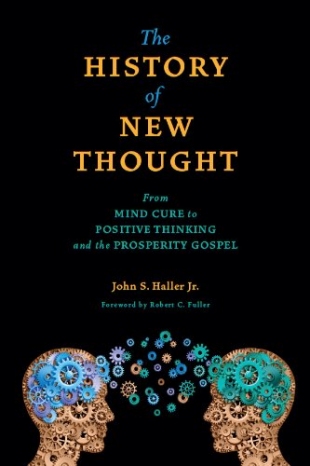John S. Haller Jr. is an emeritus professor of history and medical humanities at Southern Illinois University, Carbondale. He has written more than a dozen books on subjects ranging from race to sexuality and the history of medicine. In this well-done and wide-ranging overview of New Thought in America from its origins with Ralph Waldo Emerson and the transcendentalists to the authors of The Secret and superstar spiritual teachers such as Michael Beckwith, Marianne Williamson, and others.
From its get-go in a small circle of writers in New England in the nineteen century, New Thought offered direct access to God and new inspiration and content for those looking for something different. Ralph Waldo Emerson preached the divine presence in all people and saw himself as an avatar for a new age. With a burst of energy, Haller writes about the quest for new healing techniques (mesmerism), insights into human nature (craneology — the science of skulls), and the cosmographic views of the Renaissance figure Emanuel Swedenborg. Here the power of the mind and the surge of openness replaced Protestant evangelical conversion.
Early advocates of mind-cure approaches saw Christian Science come together as a large movement under the leadership of Mary Baker Eddy. In 1889, Charles Fillmore and Myrtle Fillmore founded the Unity School of Christianity as a community with a positive approach to life, an affirmation of the divinity of Christ in each person, and an acceptance of reincarnation. As you can see here, Unity was created from bits and pieces borrowed from other religions and traditions.
Another noteworthy arrival on the scene was Science of Mind founded by Ernest Holmes who was a popular writer and lecturer with an emphasis on positive thinking. According to Haller, these off-shoots of New Thought espoused spiritual practices such as visualizations, affirmations, and prayer as paths to harmony, peace, and prosperity.
In a lively and robust chapter on "The Psychologies of Healthy-Mindedness," the author covers the pioneering work of William James, the psychology of Emanuel Swedenborg, and the rise of positive psychology under the inspiration of Martin Seligman. In a whirl of illustrative materials and keen insights, Haller lets in light from all directions on New Thought. In one sentence he sums up the emphasis of these teachers and preachers: "They preferred focusing on cosmic piety rather than conversion, faith rather than grace, science rather than mystery, and discourse rather than argument."
Haller uses the term "dream weavers" to signify such movers and shakers as Norman Vincent Peale, Deepak Chopra, Eckhart Tolle, Gary Zukav, Wayne Dyer, Caroline Myss, and others. These free spirits have roamed the globe preaching and teaching their New Thought wisdom that appeals to those who are stuck in their lives or looking for the energy, the practice, or the truth that can bring them balance, peace, and personal transformation. His closing thoughts include the following observations:
"Although New Thought's legacy has been compromised time and again by its unsavory commercialism, it carries an unambiguous presence into the postmodern world, providing opportunities within and outside its churches and spiritual centers for direct engagement with other faiths, cultures, and issues. Initially driven by the discovery that physical healing was possible through the power of the mind and spiritual awareness, it has unfolded into an appealing process of self-realization and grasping the power to remake the circumstances and conditions in one's personal life."
